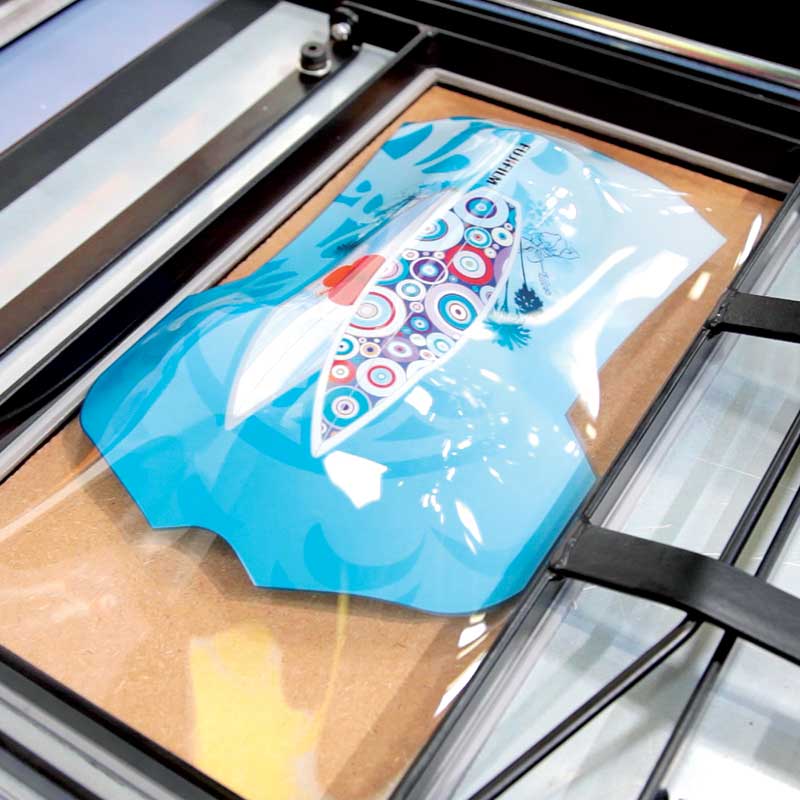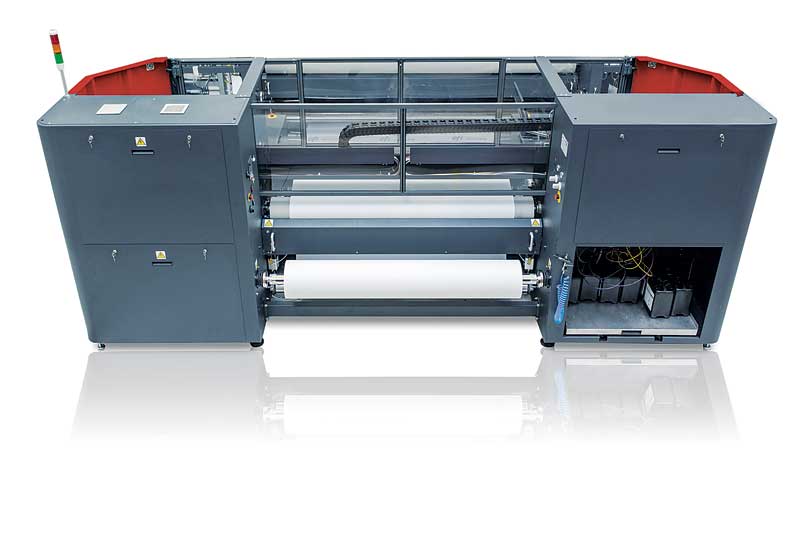
Thermoforming inks are flexible and durable, enabling a broader variety of applications.
Photo courtesy Fujifilm
The demand for increased throughput
As the wide-format graphics market continues to scale up, the need for increased throughput is becoming more critical. Many high-end production environments are now configured to output 92.9 m2 (1,000 sf) per hour, regardless of the specific ink technology.
Manufacturers have pushed print speeds well beyond that requirement by developing wider presses, adding more printheads and using LED or mercury vapour lamps for curing. In some configurations, eight to 16 printheads accommodate graphic widths up to 3.2 m (10 ft). Fortunately, as these technologies improve, prices drop, making the opportunity available to a broader range of PSPs.
Single-pass printing
After mainstream single-pass inkjet printers were introduced in 2013, it wasn’t long before they began to be used for general sign and graphics applications. While pigmented inks have improved lightfastness, even dye-based inks have been used to produce floor graphics, posters and temporary signage (i.e. images that are changed after 90 days).
Devices of this type are still in the early stages of development—less than 2,000 have been installed on a worldwide basis—and they have the potential to broaden the production graphics market. As the installed base increases, it should drive down the cost per print, especially for posters.
Total solutions
Finishing represents another area of growth. While more and more PSPs are becoming ‘total solution’ providers by offering both printing and finishing services in-house, nearly one-third still outsource at least some of their post-print work to other businesses.
As with wide-format digital printers, today’s finishing devices have been automated for faster production throughput. Even smaller PSPs can now transition their finishing work in-house and deliver a one-stop shopping experience for their customers.

Grand-format textile printers in the apparel industry have been scaled down for use in sign and print shops. This model, for example, prints graphics up to 1.8 m (5.9 ft) wide.
Photo courtesy EFI
Market strategies
Many vertical markets can represent growth opportunities for wide-format printing, but the following are a few of the most compelling industries to be strategically targeted by PSPs.
Construction
Digitally printed carpeting, glass, wallcoverings, wood, ceramic tiles and laminates are all making inroads in the construction industry. Further, more traditional signs, banners, flags and billboards are in high demand by the industry to create brand impact, attract new customers, promote services and sell homes.
Health care
The rapid growth of the health-care industry is due in part to the aging population. Hospitals, nursing homes, clinics, labs and pharmacies all need wide-format graphics, from outdoor backlit displays that promote services to indoor posters that educate patients and customers.
Food services
The food-service industry continually relies on a broad variety of digitally printed wide-format graphics to generate awareness and create ambience for the dining experience. In this highly image-conscious market, esthetically pleasing signs and banners are key to increasing sales in restaurants.
Retail
The retail sector has long been a boon to wide-format digital printing. Some wholesalers even purchase their own inkjet printers to create marketing collateral for their distributors and retailers, including POP graphics, end cap displays and promotional signage. Floor graphics can be used to lead customers directly to specific products in a store. And themed areas can be created for special holiday and seasonal campaigns.





